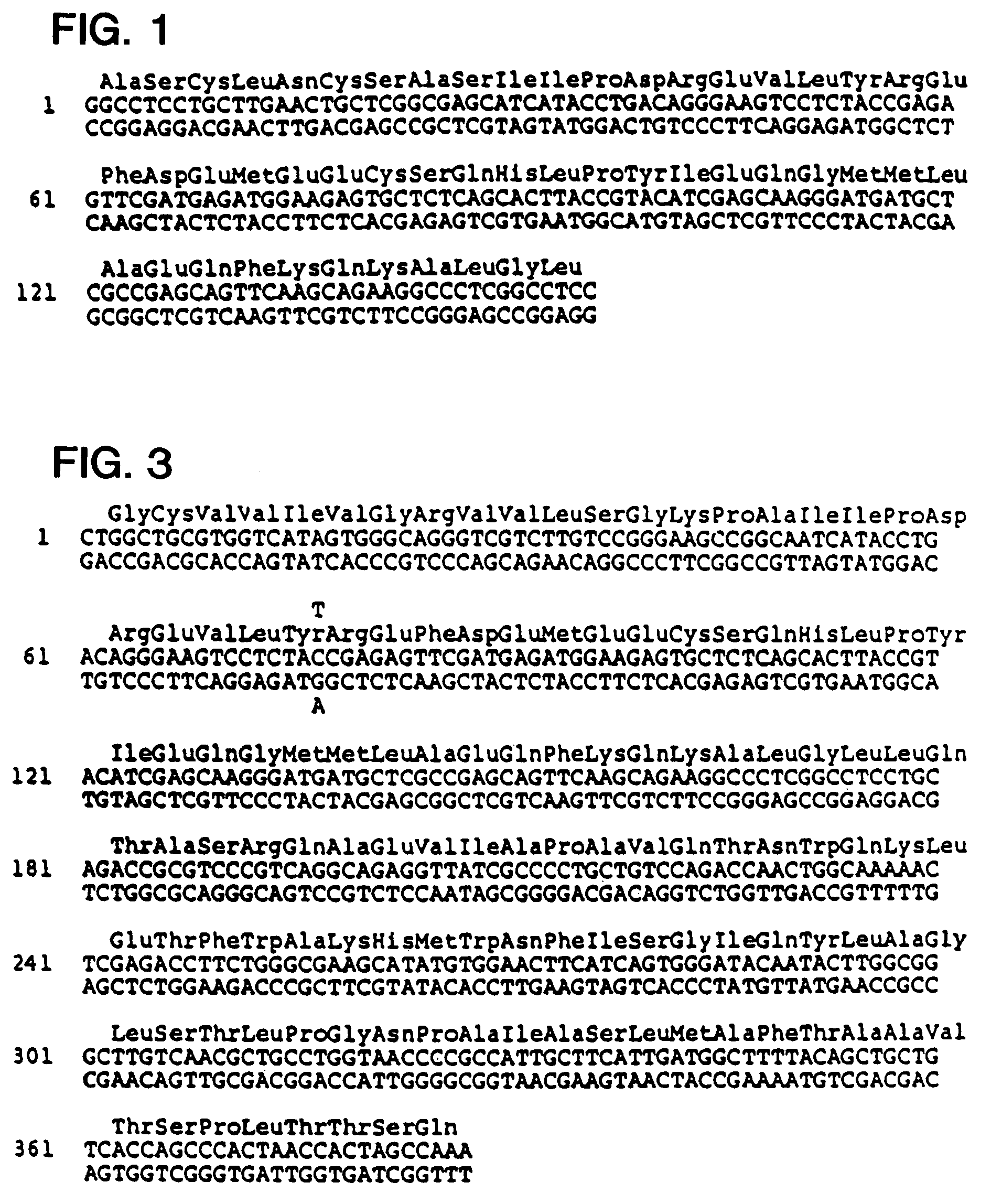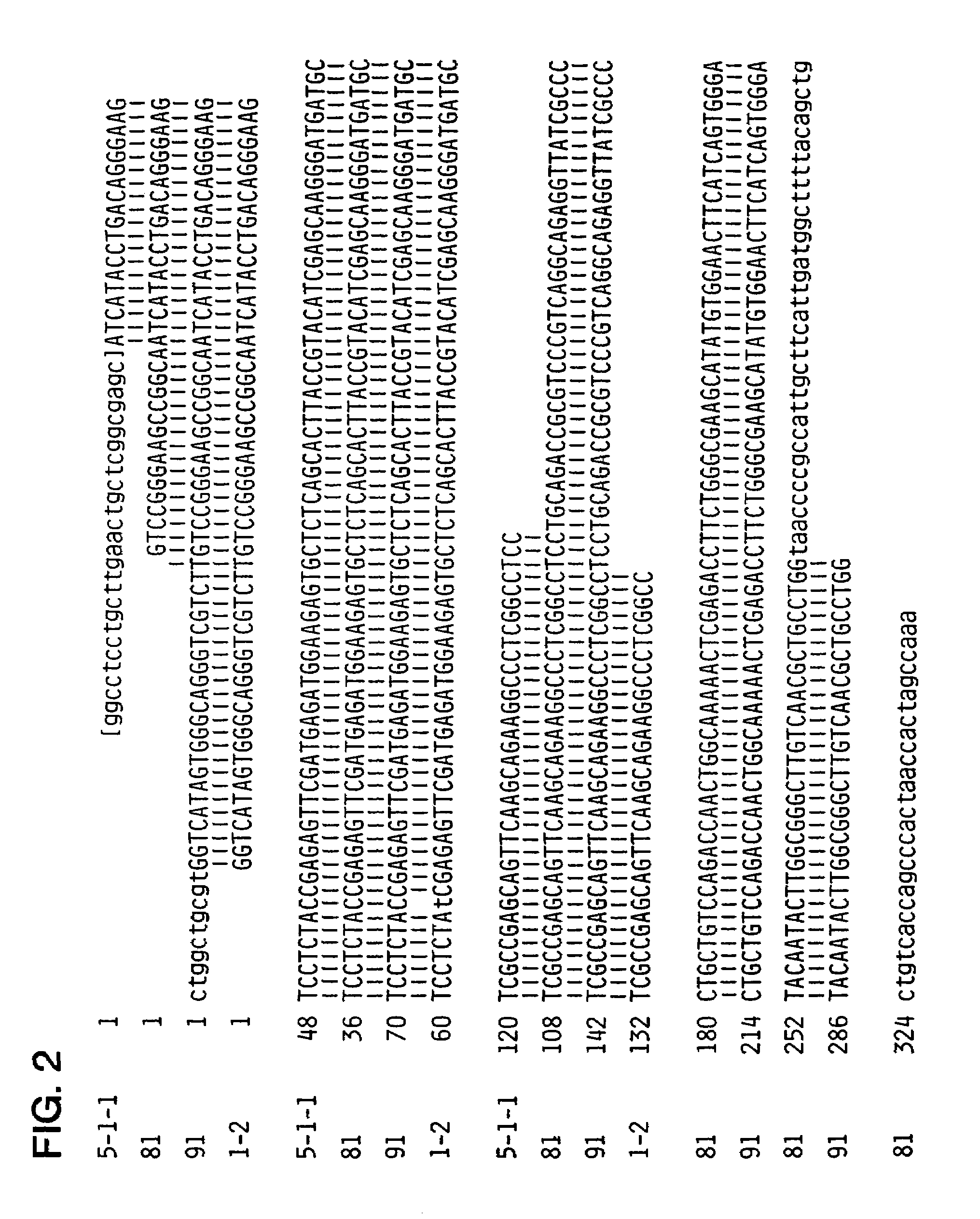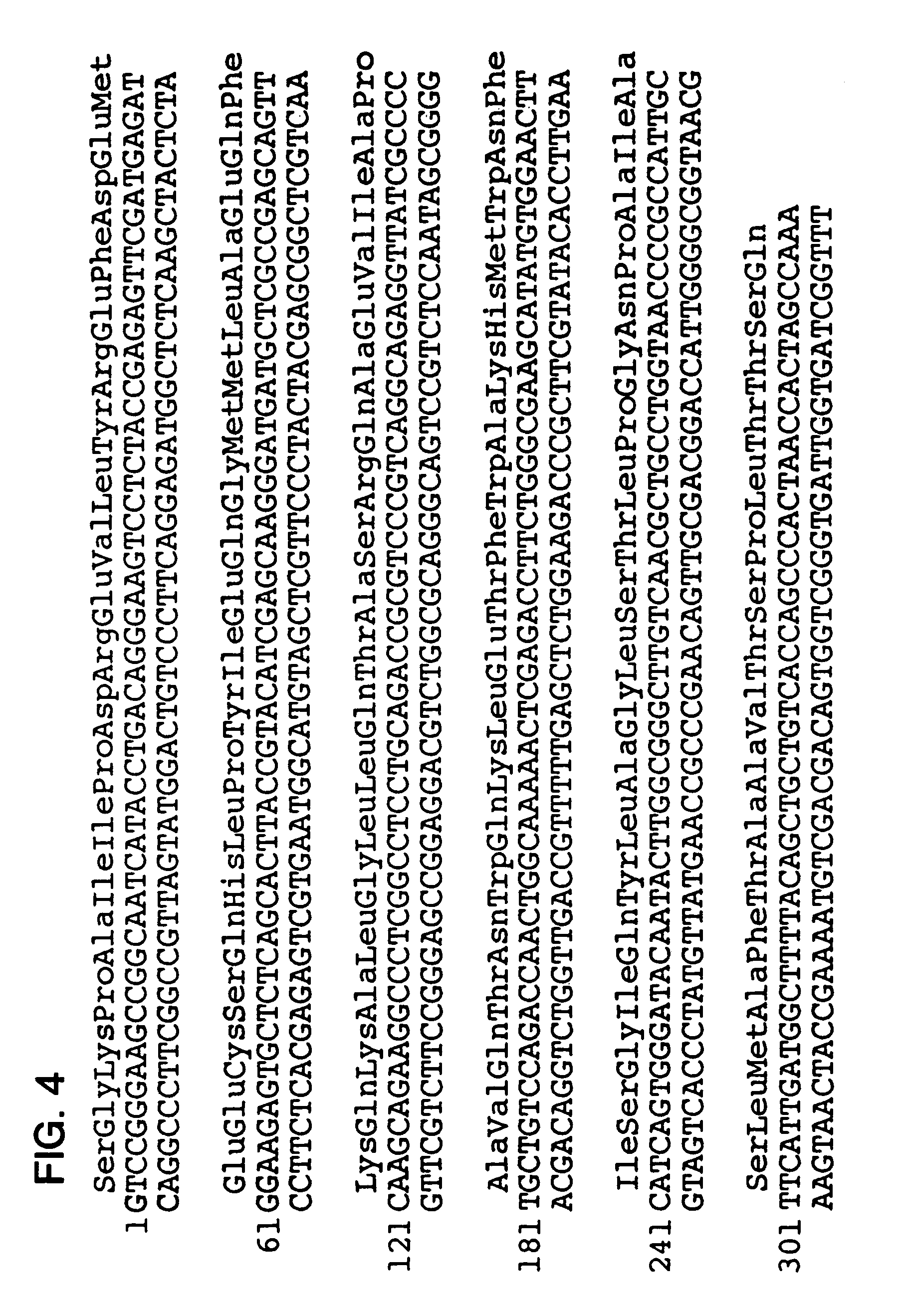NANBV diagnostics and vaccines
a technology of nanbv and diagnostics, applied in the field of nanbv diagnostics and vaccines, can solve the problems of insufficient specificity, unidentified number of agents which are causative of disease, and inability to detect the presence of nanbv, and achieve the effect of reproducibility, high detection efficiency, and high diagnostic accuracy
- Summary
- Abstract
- Description
- Claims
- Application Information
AI Technical Summary
Benefits of technology
Problems solved by technology
Method used
Image
Examples
Embodiment Construction
I. Definitions
[0237]The term “hepatitis C virus” has been reserved by workers in the field for an heretofore unknown etiologic agent of NANBH. Accordingly, as used herein, “hepatitis C virus” (HCV) refers to an agent causitive of NANBH, which was formerly referred to as NANBV and / or BB-NANBV. The terms HCV, NANBV, and BB-NANBV are used interchangeably herein. As an extension of this terminology, the disease caused by HCV, formerly called NANB hepatitis (NANBH), is called hepatitis C. The terms NANBH and hepatitis C may be used interchangeably herein.
[0238]HCV is a viral species of which pathogenic strains cause NANBH, and attenuated strains or defective interfering particles derived therefrom. As shown infra, the HCV genome is comprised of RNA. It is known that RNA containing viruses have relatively high rates of spontaneous mutation, i.e., reportedly on the order of 10−3 to 10−4 per incorporated nucleotide (Fields & Knipe (1986)). Therefore, since heterogeneity and fluidity of g no...
PUM
| Property | Measurement | Unit |
|---|---|---|
| Fraction | aaaaa | aaaaa |
| Current | aaaaa | aaaaa |
| Volume | aaaaa | aaaaa |
Abstract
Description
Claims
Application Information
 Login to View More
Login to View More - R&D
- Intellectual Property
- Life Sciences
- Materials
- Tech Scout
- Unparalleled Data Quality
- Higher Quality Content
- 60% Fewer Hallucinations
Browse by: Latest US Patents, China's latest patents, Technical Efficacy Thesaurus, Application Domain, Technology Topic, Popular Technical Reports.
© 2025 PatSnap. All rights reserved.Legal|Privacy policy|Modern Slavery Act Transparency Statement|Sitemap|About US| Contact US: help@patsnap.com



